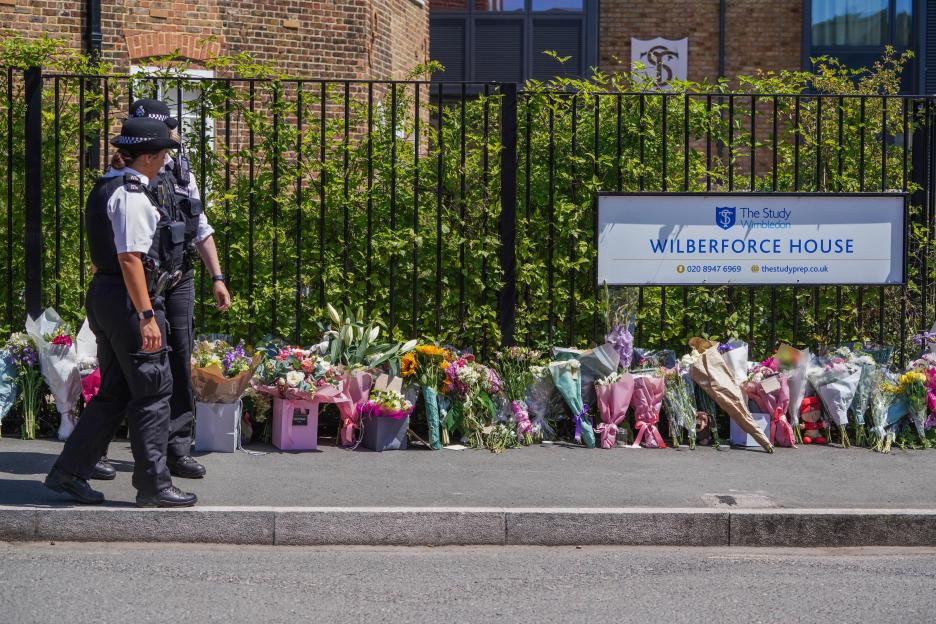Several transportation experts say that Greyhound Canada's decision to shut down bus services permanently is going to have a compounded effect on some of the country's already most disadvantaged commuters and travellers.
The decision to close the bus line's remaining routes in Ontario and Quebec deals a heavy blow to commuters in those provinces' rural and remote areas, who rely on both private and public intercity bus companies to travel.
Though the bus company had previously suspended its service in early 2020 amid the onset of the COVID-19 pandemic, several experts, advocates and former Greyhound commuters expressed concern over what the impending lack of reliable transportation options means for certain vulnerable groups and communities.
Read more: Greyhound Canada to cut all bus routes, end operations
According to Matti Siemiatycki, Interim Director of the School of Cities at the University of Toronto, some of Canada's most remote and impoverished communities are likely to be among those feeling the compounded effects wrought over the lack of accessible and affordable transportation.
“People who are low income, often students, are most dependent on intercity bus, as well as seniors who may be using it to go visit family or to get to appointments in cities as well as Indigenous people travelling in the north or remote communities,” said Siemiatycki.
“So this will have a knock-on effect on those travellers who are already the most disadvantaged and it actually even extends the struggles for connecting smaller communities.”
News of the transport company's shuttering comes a year after the company first announced that it had suspended all services amid a 95-per cent drop in passenger volume during the onset of COVID-19.
The company's closure, however, also doesn't come as a complete surprise to Siemiatycki. Other service providers, including even that of government subsidized Via Rail, have seen dramatic cuts in both service and revenue during the pandemic.
Even before the pandemic, Greyhound had opted to close all of its routes in Western Canada in 2018 — citing subsidized competition, de-regulation and publicly-owned bus systems.
“The pandemic revealed and accelerated trends that were already happening before,” said Siemiatycki. “I mean, the decision in Western Canada in 2018 was foreshadowing for what's happened today.”
Read more: How Greyhound Canada's permanent end of bus services in Ontario could impact communities
Eric Doherty, a transportation planner based in Victoria who used to frequent Greyhound's bus routes from Vancouver to his partner's farm in rural B.C., said that Greyhound's closure was going be a “disaster” particularly for the small towns and communities whose populations were already dwindling.
He expects some communities to empty out over a lack of accessibility to health care and services, while younger people and students would be less inclined to return to their smaller towns because of the hassle of transportation.
“This is about the future of community in large parts of Canada — they all just kind of wither away, you know,” he said.
Doherty said that following Greyhound's 2018 departure, B.C. was left with a “totally dysfunctional” patchwork of transportation agencies whose schedules rarely aligned.
“Greyhound wasn't great. I mean, I want to be really clear that Greyhound's service was never wonderful, but at least it was a network,” he said. “This is really crucial because for people in rural areas, very often people want to go from one fairly small community to another fairly small community.
“It just isn't a system — it's a nightmare.”
Read more: Greyhound temporarily suspends service in Ontario, Quebec due to coronavirus pandemic
It's not yet clear many would be impacted by the loss of a networked bus service in Ontario and Quebec, though the Amalgamated Transit Union (ATU) said Thursday that thousands of Canadians would be “left stranded” over the closure.
“This is devastating news for the thousands of Canadians, especially those from Indigenous and First Nations communities, who have relied on Greyhound for transportation,” said ATU International president John Costa in a statement.
The issue of transportation for those in remote Indigenous and First Nations communities was also of great concern according to both Siemiatycki and Doherty.
Doherty said that while it was mostly an issue of inconvenience and cost in his case, a lack of safe and reliable transportation would be tantamount to “life and death” for Indigenous women.
“We've had, all across Canada, Indigenous women disappear when they're hitchhiking, and it's not just Indigenous women, but the majority of women who are forced into hitchhiking and disappear are Indigenous.”
Significantly increased rates of poverty in Indigenous communities compared to that of non-Indigenous means that many in those communities do not have access to cars or other forms of reliable transportation, and must resort to hitchhiking.
A disproportionate number of Indigenous women have either gone missing or were murdered in last 50 years, B.C.'s Highway of Tears being one of the most notoriously documented locations for such disappearances. The stretch of land, which spans the part of Highway 16 running from Prince George to Prince Rupert, didn't have subsidized bus service until 2017.
Read more: Loss of Greyhound bus service makes some rural areas ‘feel cut off'
A statement from Canadian Transport Union President John Di Nino cited the Missing and Murdered Indigenous Women and Girls (MMIWG) Report, which highlighted the need for reliable intercity bus transit as a step towards reconciliation.
“The decision today and inaction by the Trudeau government has further entrenched the reality of isolation and throws the Trudeau government even further off the path of reconciliation,” read the statement.
In response to Greyhound's closure, Federal Transport Minister Omar Alghabra said that he was disappointed by the decision to stop operations in Canada and that they were going to work with provincial governments.
“Throughout this pandemic, we have worked with businesses that were hard-hit, especially those in the transportation sector. We have been there from the start to provide financial assistance,” read Alghabra's statement.
Please read my statement on Greyhound: pic.twitter.com/pF6KuW8QAa
— Omar Alghabra (@OmarAlghabra) May 13, 2021
According to a statement on Greyhound Canada's website, though, several efforts reaching out to the provincial and federal government for financial support turned out to be “negligible.”
Meanwhile, according to Siemiatycki, there are a few possibilities as to what comes next for bus service in those spaces.
Some private bus companies might move into the more profitable routes, with smaller and more remote communities continuing to be left out, or the government might subsidize some of the existing companies to pick up bus routes or implement shared bus services and shuttles.
Doherty said that this presented a huge opportunity because the lack of service was now making its way across Canada — not just in the west.
“There's the potential for political pressure to force the federal government into funding some kind of national public bus system,” he said. “Whether that's via bus, whether that's via bus and provincial service — I don't know, but something's got to be done.”





